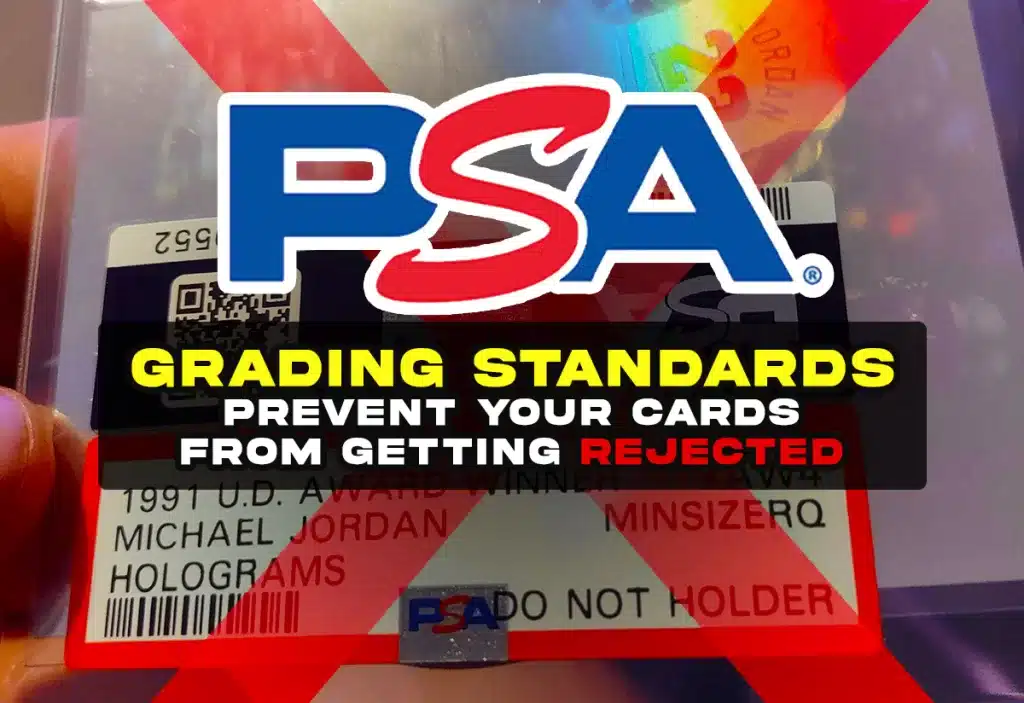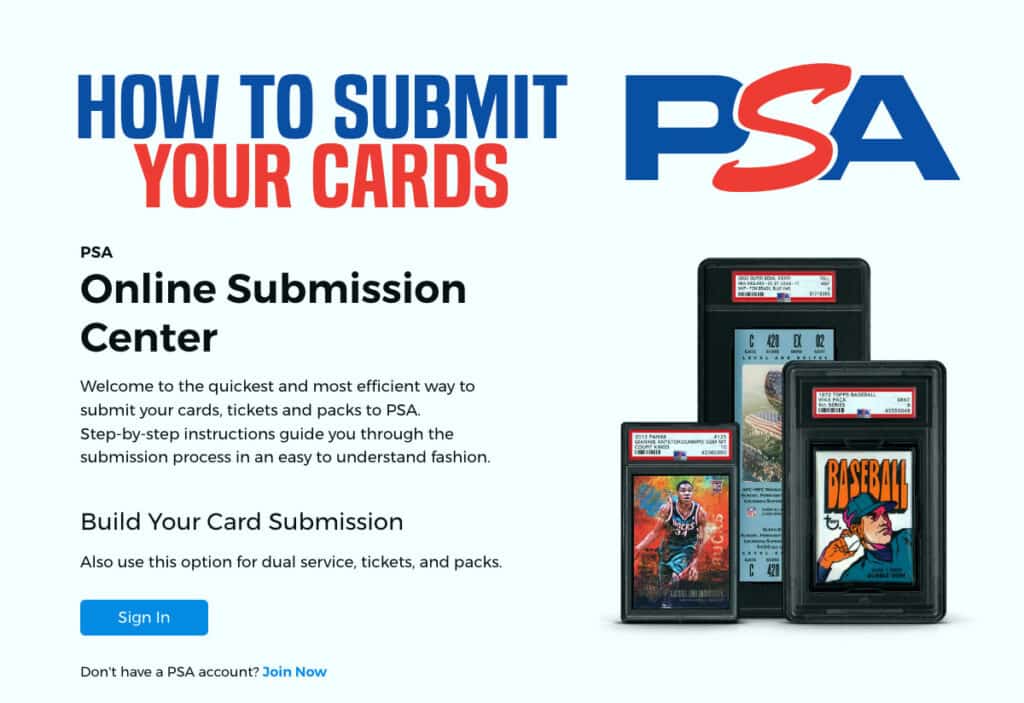Hey all, it’s Matt with Graded Card Investor and today we’re looking at the PSA grading standards. Understanding the intricate details of how PSA grades cards, the reasons cards may be rejected, and strategies for successful submission are essential for anyone looking to maximize their card’s value and appeal.
No Grade Definitions by PSA
If your card is returned without a numeric grade in a card saver sleeve, that determination was made based on one of the following reasons:
N1 Evidence of Trimming:
- When a card’s edge appears to have been altered. A card doctor may use scissors, scalpel, cutter, or any other sharp instrument. A card that appears trimmed: A hooked appearance along the edge, unusually sharp or uncommon edges for the issue, an inconsistent tone to the color of the edge in question or a wavy, unnatural look to the edges. Note that this designation can qualify for encapsulation as “Authentic Altered” at the grader’s discretion and if “AA” is listed on the submission form as the desired minimum grade. You will be charged the applicable grading fee in either case.
N2 Evidence of Restoration:
- When a card’s paper stock appears to have been built up – for example, when ripped corners are built up to look like new corners. Note that this designation can qualify for encapsulation as “Authentic Altered” at the grader’s discretion and if “AA” is listed on the submission form as the desired minimum grade. You will be charged the applicable grading fee in either case.
N3 Evidence of Recoloration:
- Where a card’s color appears to have been artificially improved. Note that this designation can qualify for encapsulation as “Authentic Altered” at the grader’s discretion and if “AA” is listed on the submission form as the desired minimum grade. You will be charged the applicable grading fee in either case.
N4 Questionable Authenticity:
- This is the term used when a card appears to be counterfeit or when the autograph is deemed to be not genuine. This designation would never qualify for encapsulation under any circumstance and applicable grading fees would still apply.
N5 Altered Stock:
- This includes, but is not limited to characteristics on the card that appear to show some form of alteration such as paper restoration, crease/wrinkle pressing or enhanced gloss. Note that this designation can qualify for encapsulation as “Authentic Altered” at the grader’s discretion and if “AA” is listed on the submission form as the desired minimum grade. You will be charged the applicable grading fee in either case.
N6 Minimum Size Requirement:
- When a card is significantly undersized according to factory specifications. You will not be charged the grading fee in this instance. Note that this designation can qualify for encapsulation as “Authentic” only at the grader’s discretion and if “Auth” is listed on the submission form as the desired minimum grade. You will be charged the applicable grading fee in the latter case.
N7 Evidence of Cleaning:
- When a whitener is used to whiten borders or a solution is used to remove wax, candy, gum or tobacco stains. Note that this designation can qualify for encapsulation as “Authentic Altered” at the grader’s discretion and if “AA” is listed on the submission form as the desired minimum grade. You will be charged the applicable grading fee in either case.
N8 Miscut:
- This term is used when the factory cut is abnormal for the issue, causing the card’s edges to deviate from their intended appearance. You will not be charged the grading fee in this instance. Note that this designation can qualify for encapsulation as “Authentic” at the grader’s discretion and if “Auth” is listed on the submission form as the desired minimum grade. You will be charged the applicable grading fee in the latter case.
N9 Don’t Grade:
- The term is used when we do not grade or cannot encapsulate an issue. The cards may be oversized or an obscure issue. This designation does not qualify for encapsulation, and you will not be charged the grading fee. Note: If additional information from two or more verified or hobby-approved resources are provided for the issue, the decision could be reversed upon resubmittal. Submit a “Research Request” in advance through the Customer Request Center (CRC) to inquire about a specific item.
This comprehensive guide delves deep into the nuances of PSA grading, offering insights from grading standards to advanced submission tips.
Whether you are a seasoned collector or new to the hobby, this guide aims to equip you with the knowledge needed to navigate the PSA grading process successfully and make informed decisions about your valuable trading cards.
Understanding PSA Grading Standards
- Grading Scale Insight:
- What is a PSA 10?: PSA grading standards state a PSA 10 is in near perfect condition, with sharp corners, no staining, minor print imperfections acceptable, and specific centering standards.
- What is a PSA 9?: Exhibits one minor flaw like slight wax stain, minor printing imperfection, or slightly off-white borders.
- Lower Grades (PSA 8 to PSA 1): Varying degrees of flaws like staining, fraying, printing errors, and loss of gloss.
- Half-Point Increments: Cards between PSA 2 and PSA 9 may receive a half-point increase focusing mainly on centering.
- Authenticity Over Grade: Cards may be labeled “Authentic” without a numerical grade due to alterations or major defects.
Reasons for Card Rejection
- Fake or Modified Cards: Cards deemed fake or significantly modified by PSA staff are disqualified.
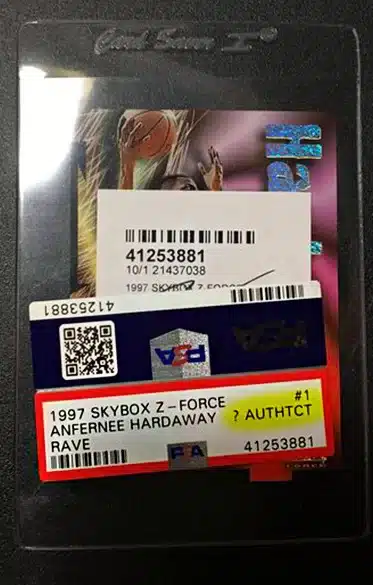
- Authentication Issues: If PSA can’t verify the card’s authenticity, they will not put it in a holder.
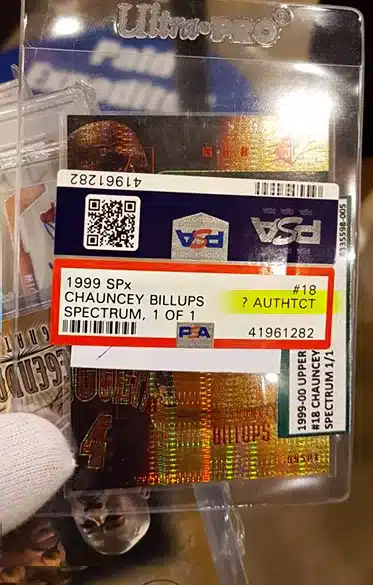
- Factory Defects: Cards with factory defects like off-center graphics or irregular cuts might not meet PSA standards.
- Submission Errors: Mistakes in submission forms or incorrect service levels can lead to rejection. So pay attention and take your time.
- Physical Size: Cards not fitting the standard holder sizes are rejected due to possibly “trimming”. Read more on how to tell if a card is trimmed.
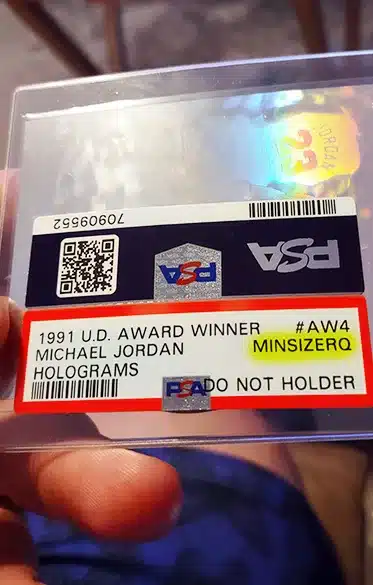
Tips for a Successful PSA Submission
- Card Inspection: Use tools like magnifying lamps to inspect for flaws like re-coloring and surface scratches. This is the magnifying lamp that I use and its affordable and works great!
- Proper Handling: Use new penny sleeves and grading candidate holders to avoid damage and smudges during shipping.
- Easy Removal: Utilize Post-it flags for easy card removal during the grading process.
- Submission Strategy: Place the weakest card first in your submission stack to potentially influence grading leniency.
- Organized Submission Form: Group cards by set and player for ease of processing.
- Check out my in-depth tips and tricks for submitting to PSA.
Advanced Tips for Grading with PSA
- Select High-Value Cards: Focus on cards of athletes who sell well in the market, like Michael Jordan or LeBron James.
- Aesthetically Pleasing Cards: Choose cards with iconic images and good design, avoiding those with dark edges or difficult-to-grade designs.
- Market Value Research: Understand the resale value of a PSA 10 grade for the card you’re considering.
- PSA Population Report: Check for low-graded populations of the card for less competition and better grading odds.
- Careful Card Acquisition: Purchase raw cards with potential for high grades, considering both athlete and card set.
- Thorough Card Inspection: Use tools to check for scratches, print lines, and corner quality in order to meet PSA grading standards.
- Centering Assessment: Ensure the card is well-centered, but know that PSA allows some leniency.
- Submission Groups: Use PSA submission groups for better tracking and faster processing, avoiding longer services.
Conclusion
In conclusion, mastering the art of PSA grading is a critical skill for any serious trading card collector or seller. By thoroughly understanding PSA’s grading standards, recognizing common reasons for card rejection, and implementing effective submission strategies, you can significantly enhance your chances of achieving desirable grades for your cards.
Remember, meticulous inspection, careful selection, and organized submission are key. With the insights and tips provided in this guide, you are well-equipped to navigate the complexities of PSA grading, ensuring your treasured cards receive the recognition and value they deserve in the dynamic world of trading card collecting.
From a young age, Matt dove deep into sports card valuation, turning to esteemed price guides like Beckett and Tuff Stuff. Eventually he extended to Pokémon, Magic: The Gathering, and Yu-Gi-Oh!. With a vision to sustain and nurture the hobby he loved, Matt established the ‘Graded Card Investor’ YouTube channel and website. He aims to foster a healthy community and offer invaluable insights to those entering the world of sports cards and TCGs. His depth of understanding, from the card market’s 2020 pinnacle to its 1990s valleys, is consistently fortified by meticulous research.
